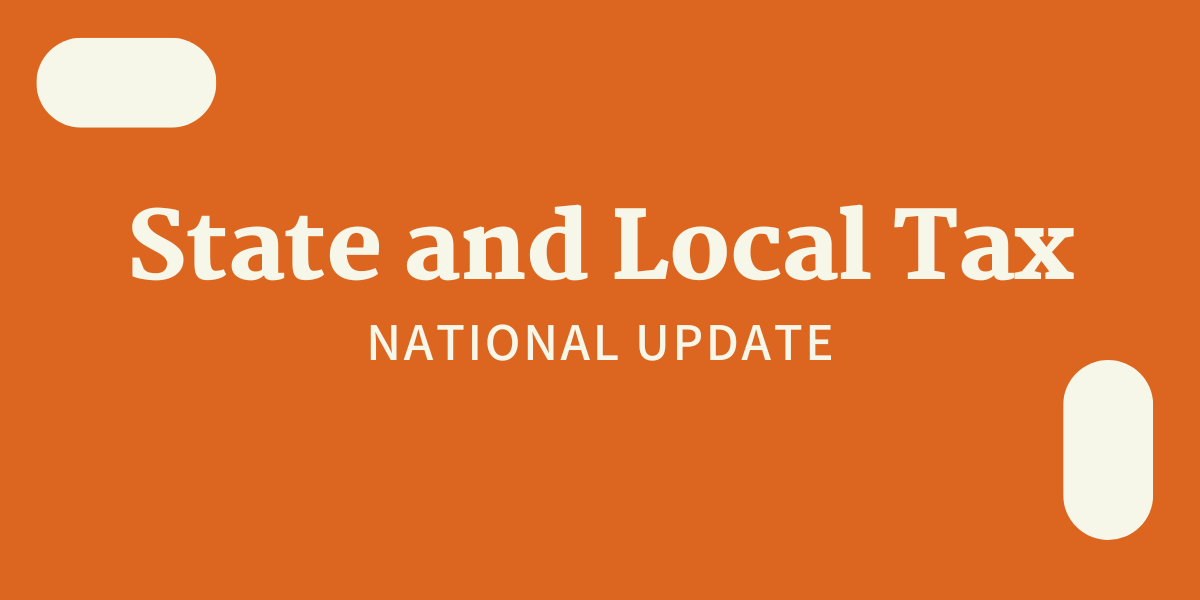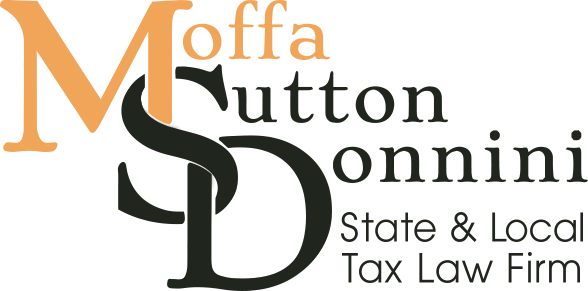NEWS & INSIGHTS

Tangible Personal Property in the Digital Age

The definition of tangible personal property (TPP) has never been more contested than it is in 2025. As technology evolves faster than tax statutes, the tension between old laws and new business models continues to grow. With courts and tax authorities struggling to apply mid-20th-century language to digital-age transactions, businesses are increasingly caught in the crosshairs of inconsistent interpretations, unpredictable audit outcomes, and conflicting tax treatments.
This article explores the modern challenges in defining TPP across sales tax, property tax, and income tax, including how software, digital goods, embedded intangibles, and mixed transactions are treated under state and federal law. It also highlights recent litigation and policy developments that illustrate the complexity and urgency of this issue.
What Is Tangible Personal Property?
At its core, tangible personal property is property that:
-
Has physical form,
-
Is capable of being touched or perceived by the senses, and
-
Is not classified as real property or intangible property.
But that seemingly simple definition is anything but simple when applied to the digital economy.
Federal View:
There is no single, uniform definition under the Internal Revenue Code (IRC). Federal regulations have begun to define specific terms such as digital content, computer programs, and cloud transactions, but even recent regulations have shifted—from relying on a “lease vs. service” test to now treating all cloud transactions as services.
State View:
Each state—and often each type of tax within a state—may apply a different definition of TPP. For example:
-
Streamlined Sales Tax states define TPP as anything perceptible to the senses.
-
Texas and Tennessee expand the definition to include goods, chattels, machinery, and equipment.
-
California differentiates between operational and non-operational software for sales and property tax purposes.
Tangible for One Tax, But Not for Another?
One of the most persistent challenges is that what qualifies as TPP for one tax type may not qualify for another. A product might be classified as tangible for sales tax purposes but considered intangible—or even excluded entirely—under property tax or income tax rules.
For example, in the case of ADP LLC v. Arizona Department of Revenue, the Arizona court determined that SaaS (software as a service) constitutes TPP under the state’s transaction privilege tax because it is “perceptible to the senses.” This is true despite software traditionally being treated as an intangible asset for property tax or income tax purposes.
Similarly, a California case drew a sharp contrast between sales tax treatment and property tax treatment for bundled software. What is embedded may be taxed differently based on how it is packaged, delivered, or sold—adding complexity for both taxpayers and auditors.
Digital Goods and Embedded Intangibles
As more products and services are delivered electronically, courts and legislatures are grappling with whether digital content qualifies as TPP.
Examples from the Courts:
-
Viewing a movie in a theater has been held to transfer TPP because it’s perceptible to the senses (American Multi-Cinema v. Hegar).
-
Cloud-based security software may or may not be TPP depending on how it’s sold, licensed, or bundled with hardware (see fictional example of a surveillance robot and software sold by separate entities).
-
In Massachusetts, courts held that software licensing transactions were not taxable when structured as technology transfer agreements (TTAs)—but the same software might be taxed differently under property tax rules.
These cases reveal the arbitrary lines that can form when defining what qualifies as tangible personal property in the modern digital environment.
Sales Tax and the “True Object” Test
In many states, courts use the “true object test” to determine whether a transaction involving services and property is taxable. If the true object is the transfer of TPP, the whole transaction may be subject to sales tax—even if bundled with services.
But in the absence of clear statutory definitions or agency guidance, outcomes are highly fact-dependent and can vary dramatically between states or even between tax auditors within the same state.
Income Tax Implications: Nexus and Public Law 86-272
In the world of income tax, the classification of TPP plays a central role in determining nexus protections under Public Law 86-272.
Why It Matters:
-
PL 86-272 prohibits states from taxing net income if a taxpayer’s only in-state activity is soliciting sales of tangible personal property that are fulfilled from out of state.
-
But does PL 86-272 apply to sales of digital goods or software?
-
Does a cookie placed on a customer’s browser create a sufficient physical presence?
Several states are adopting guidance based on the Multistate Tax Commission (MTC) model, which defines certain web-based activities—like chat support or remote diagnostics—as unprotected activities that trigger nexus, even when the product being sold might be classified as TPP.
Property Tax Treatment of TPP
From an ad valorem tax standpoint, the classification of property as real, tangible, or intangible determines whether it is taxed and how it is valued.
-
Real property is generally assessed at acquisition value and may appreciate.
-
TPP is assessed at a depreciated value.
-
Intangibles, such as copyrights or goodwill, are often exempt from property tax altogether.
However, bundled goods and embedded software blur these lines. The same software may be taxable or exempt depending on whether it’s delivered on a disc, downloaded, or accessed remotely.
Special Issue: Throwback Rules
The treatment of TPP also affects throwback rules, which determine whether sales are assigned to the state of origin when a taxpayer is not “subject to tax” in the destination state.
With states moving toward market-based sourcing, throwback becomes harder to apply—especially when the taxpayer’s product falls into a gray area between tangible and intangible property. For instance, if software is defined as TPP for PL 86-272 purposes, the seller may not be subject to tax in the destination state, and throwback rules may apply.
But if it’s deemed intangible or a service, then PL 86-272 protections vanish, and throwback may no longer apply—resulting in either increased or decreased state income tax obligations, depending on the facts.
Manufacturing, Low-Tech, and Emerging Risks
Even outside the digital realm, the definition of TPP raises thorny questions:
-
Are you manufacturing TPP when you transmit electricity, phone signals, or digital code?
-
Has formerly exempt manufacturing equipment become real property due to installation?
-
Are repairs to installed machinery now subject to sales tax or property tax?
-
How will AI, blockchain, and non-tangible outputs affect these frameworks?
The answers are often murky, and taxpayers must stay alert to how new technologies—and old definitions—collide.
Key Takeaways: Navigating TPP Classifications in 2025
-
Know Your Jurisdiction: Definitions of TPP vary by state and by tax type. What counts as tangible for sales tax may be intangible for property or income tax.
-
Don’t Assume Cross-Tax Consistency: One classification doesn’t automatically carry over. For example, cloud software may be TPP for sales tax but a service for income tax.
-
Watch for Legislative and Regulatory Updates: States are actively adopting or diverging from MTC models. Stay on top of guidance in California, New Jersey, New York, Oregon, and Minnesota.
-
Consider Embedded and Bundled Goods: How software is packaged or licensed matters. Evaluate each component—hardware, firmware, user interface, remote access—to determine taxability.
-
Evaluate Web-Based Activities: Online features like chat functions, digital warranties, or cookies may trigger nexus even when TPP is being sold.
-
Review Tax Apportionment and Throwback: Your sales factor could change dramatically depending on whether you’re classified as selling TPP or providing a service.
Conclusion: The Tangibility Line Keeps Shifting
As the digital economy continues to evolve, the once-clear lines around what qualifies as tangible personal property are becoming increasingly blurred. State legislatures, tax agencies, and courts are grappling with the reality that technology doesn’t fit neatly into tax classifications written decades ago.
Businesses must monitor developments, reassess compliance strategies, and seek clarity in contracts and documentation. In 2025, tax risk no longer comes only from what you own—but from how it’s defined.
© 2025 Jeanette Moffa. All Rights Reserved.
Share
Facebook
X
LinkedIn
Email
Additional Articles by the SALTy Orange at Moffa Tax Law:
April 30, 2025
The Shifting Economic and Tax Landscape in 2025: A Detailed Look at Business Tax Trends and State Fiscal Responses
NEWS & INSIGHTS The Shifting Economic and Tax Landscape in 2025: A Detailed Look at Business Tax Trends and State…
Read More
April 29, 2025
Florida Sales Tax Audit Defense: The Ultimate Guide for Businesses
NEWS & INSIGHTS Florida Sales Tax Audit Defense: The Ultimate Guide for Businesses Introduction If you own or operate a…
Read More
April 28, 2025
State Tax Legislation – What Could State Tax Audit Defense Look Like Next Year?
NEWS & INSIGHTS State and Local Tax Legislative Trends As the 2025 legislative year unfolds, state and local tax (SALT)…
Jeanette Moffa, Esq.
(954) 800-4138
[email protected]
Jeanette Moffa is a Partner in the Fort Lauderdale office of Moffa, Sutton, & Donnini. She focuses her practice in Florida state and local tax. Jeanette provides SALT planning and consulting as part of her practice, addressing issues such as nexus and taxability, including exemptions, inclusions, and exclusions of transactions from the tax base. In addition, she handles tax controversy, working with state and local agencies in resolution of assessment and refund cases. She also litigates state and local tax and administrative law issues.



